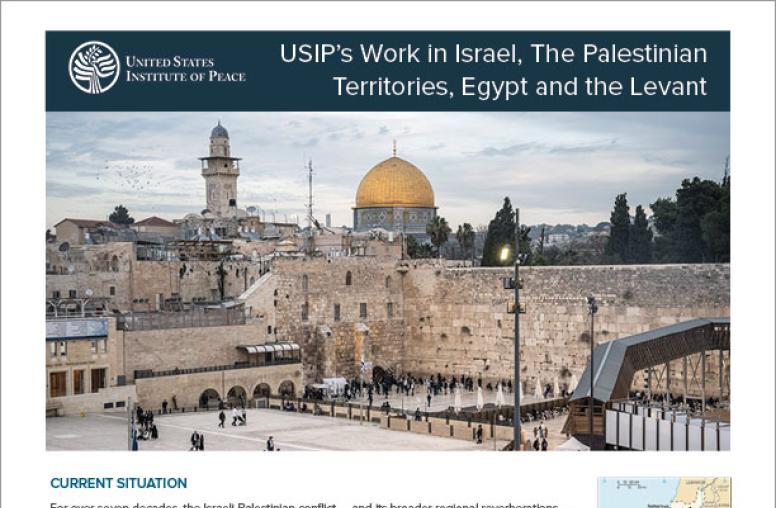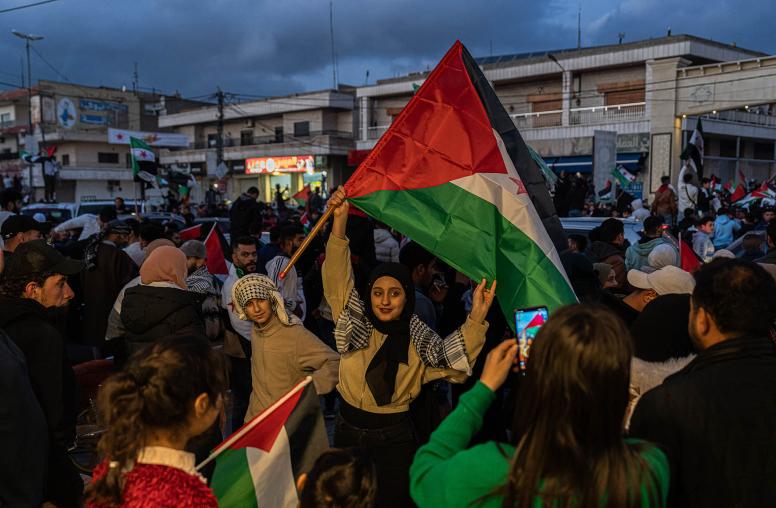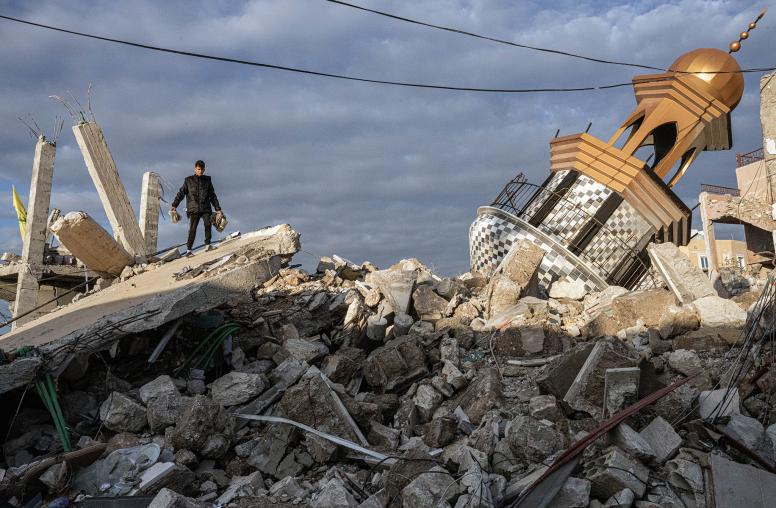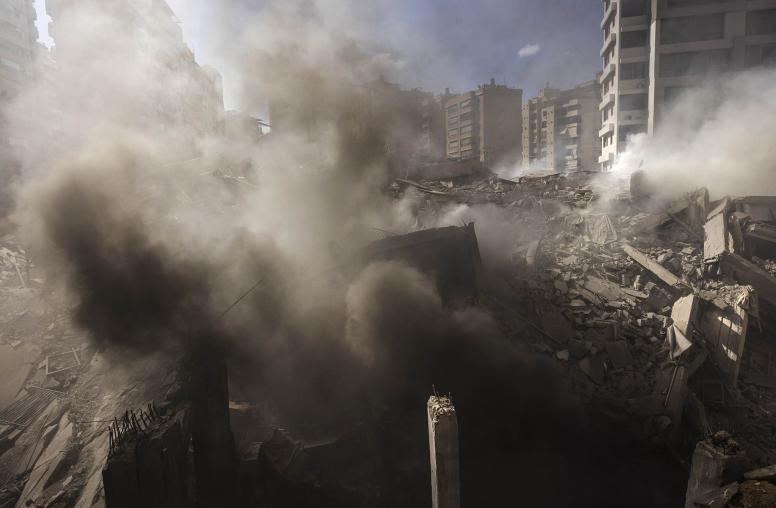Crisis in Lebanon: Is Peacekeeping Possible?
How can the UN ceasefire resolution that called for the cessation of hostilities between Israel and Hezbollah ensure a lasting peace? USIP convened a roundtable of panelists to discuss the criteria for effective peacekeeping in the aftermath of this latest crisis in the Middle East.
The UN Security Council resolution 1701, passed August 11, 2006, provides for cessation of hostilities and paves the way for the arrival of a beefed-up international peacekeeping force in Lebanon. The cease-fire comes after a month of warfare between Israel and Hezbollah that devastated Lebanon's infrastructure, stymied Israel's effort to strike a knock-out blow against Hezbollah guerillas, and magnified Muslim resistance to American foreign policy goals in the Middle East.
What can a peacekeeping force do? Unless it is genuinely supported by the parties to the conflict and tied to a broader political and diplomatic settlement in the region, the emerging arrangement cannot provide an enduring solution for Lebanon and for Israel. It might buy time for lasting progress, but only if followed rapidly by political agreements within Lebanon and between Lebanon and its neighbors.
This was the sobering consensus among panelists at a Current Issues Briefing, co-sponsored by the U.S. Institute of Peace and the Middle East Institute, on "The Crisis in Lebanon: Is Peacekeeping Possible?" The August 16, 2006 event hosted a panel of speakers: Ambassador James Dobbins of RAND, Ambassador Arthur Hughes of the Middle East Institute (formerly head of the Multinational Force of Observers in the Sinai), William Stuebner of ACDA/VOCA and Lieutenant Colonel (ret.) Mike Bailey of RONCO. Ambassador David Mack of the Middle East Institute moderated and USIP Vice President Daniel Serwer introduced the event. This USIPeace Briefing highlights the central points made during the discussions and does not represent the views of the Institute, which does not advocate specific policies.
The environment is not conducive...

Aug 8 - Red Cross workers pass aid supplies across a river in Tyre, Lebanon, after roads were destroyed by Israeli attacks. More on the crisis. (Photo: AP/Wide World)
Despite a robust civil society and long tradition of constitutionalism, Lebanon has an even longer history of weak central government, political instability, personal insecurity, weak armed forces and porous borders. Hezbollah is in many respects stronger than the central government and amply supported by Syria and Iran. This is not an environment conducive to peacekeeping, which has failed several times in Lebanon in recent decades.
Hezbollah needed only to survive in order to 'win' the war. It is now actively seeking to win the peace through prompt and intensive support for reconstruction. The Lebanese government has a window of opportunity to seek disarmament and military demobilization of Hezbollah, which will have to gain something in exchange. This is only possible in the context of a political compact among the political forces within Lebanon.
...the force is limited in capability...
The projected troop deployment of 15,000 is sufficient to play a traditional inter-positional peacekeeping role, provided the warring parties want it to succeed. In that limited role, it will be able to prevent raids across the border; or at least alter Israeli officials of them. However it will have little capability to deal with rockets, which have been Hezbollah's main weapon against Israel.
The peacekeeping mission will strengthen Lebanese government control over its national territory, Dobbins noted, but allows use of force only at the request of the Lebanese government, which is not likely to ask for it.
...and Israeli and U.S. hopes for a forceful mission are likely to be disappointed...
The mission's responsibility is therefore preventing "mistakes, mishaps, and misunderstandings," rather than interjecting itself in cases where either party deliberately initiates conflict.
The peacekeepers will not be able to force disarmament and demobilization of Hezbollah or actively repress it. Securing Hezbollah's arms and rocket-launch sites without Hezbollah's cooperation is beyond the capability of the mission and the intentions of the donor countries.
...unless there is a broader peace effort.
Past peacekeeping missions from the Balkans to the Sinai suggest that there are several basic requirements for an effective mission. These include broad international support, unity of command, a clear mandate, a strong information campaign, and flexibility.
Support for the mission has to come not only from the warring parties but also from neighbors and the broader international community. Stakeholders need to be brought into the process, and provided with motivation to contribute to success, said Hughes. Syria presents a case in point. Mack, Stuebner, and Hughes agreed that Syria, whose support for Hezbollah was a major factor in creating the problem, could also be part of the solution, provided it sees prospects for re-initiating peace talks with Israel and for improved relations with the United States.
Disarmament, demobilization, and reintegration (DDR) is "essential to creating conditions for a sustainable peace," in Bailey's view. Without it, a return to hostilities is likely. Hezbollah must be offered incentives to disarm. Its members need alternatives that are "honorable, credible, and allow them to take care of their families." At the same time, a broader political settlement between Israel and Lebanon (including resolution of Shebaa farms, the last remaining territorial issue) would strengthen the Lebanese government and increase the likelihood of success in the DDR effort.
The Security Council resolution "pinned the rose" on the UN Security General to develop modalities for DDR. This will require substantial time and international commitment, as well as financial resources. The scheduled donors' conference at the end of the month in Stockholm will reveal the intentions and the commitment of the international community, which is in a race with Hezbollah militants to demonstrate its effectiveness and commitment to the Lebanese people.
Conclusion
As Hughes noted, "there is no military solution to either this immediate problem or to the root cause, in the absence of a comprehensive peace between Israel and its neighbors." The peacekeeping mission, even if successful in preventing unintentional violations of the cessation of hostilities, is not a cure-all for tensions in the region. It is only one piece of a larger political, diplomatic, and economic puzzle involving Israel, Lebanon, Hezbollah, Syria, and Iran.
This USIPeace Briefing was written by Beth Cole DeGrasse and Christina Parajon in the Center for Post-Conflict Peace and Stability Operations at the United States Institute of Peace. The views expressed here are not necessarily those of the Institute, which does not advocate specific policies.
The United States Institute of Peace is an independent, nonpartisan institution established and funded by Congress. Its goals are to help prevent and resolve violent international conflicts, promote post-conflict stability and development, and increase conflict management capacity, tools, and intellectual capital worldwide. The Institute does this by empowering others with knowledge, skills, and resources, as well as by directly engaging in peacebuilding efforts around the globe.



